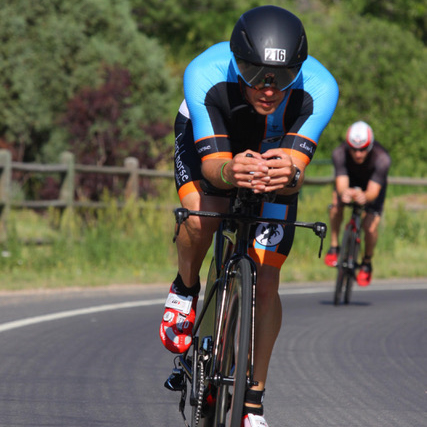In triathlon there is a lot of focus on going fast, putting the hammer down, and feeling the burn. While that is a key component to building threshold fitness, those energy systems are often over-targeted, leading to peaking prematurely, injury or burnout.
Zone 2 heart rate or power can generally be equated to a steady aerobic effort. While still conversational, it’s still involves a focus on maintaining rhythm and efficient biomechanics at an even pace. Very generally, it is approximately 85% of your threshold heart rate or power output. Threshold is the hardest output you can sustain for 40 to 60 minutes. Zone 1, alternately, is reserved for recovery and very easy efforts.
The primary benefit of zone 2 training is that it builds aerobic base and endurance. Increased aerobic capacity enhances your ability to sustain a sub threshold pace for a longer period of time. In conjunction with higher intensity efforts, zone 2 is the foundation from which to begin to build threshold fitness. Strong aerobic capacity also allows you to recover more quickly between those higher intensity efforts as you progress into your season. For example, with strong aerobic fitness, you may ultimately be able to perform intervals with a shorter rest in between or be able to perform a higher volume of intervals at the same pace.
By sticking to lower heart rates for progression of running or cycling week after week you will notice that pace will gradually increase at the same heart rate output. This is because you start to build aerobic efficiency. You can log more training hours at a lower heart rate. The result is increased muscular endurance. Muscular durability in the legs is critical for maintaining form and pace in long distance triathlon.
For Ironman triathletes, zone 2 bike training for durations of over four hours are ideal opportunities to practice race specific nutrition. By dialing in your Ironman nutrition protocol, you can test caloric ingestion limits as well as observe your energy availability and muscular ability when running off the bike. In zone 2 you’re able to utilize a higher percentage of fat as fuel versus glycogen. As you go faster the ratio of glycogen consumption increases as well. Glycogen has a more limited fuel supply; without supplementation you can typically store about 1.5 to 2 hours of glycogen in your muscles. In a long distance triathlon, you will always to run a caloric deficit, burning more calories than you can ingest and relying on body fat stores to get you to the finish line. The more you can supplement with quick access energy carbohydrates, the higher percentage of threshold you can race throughout the day. If you are forced to use fat as your primary source of fuel because glycogen is depleted, you’ll have to slow down as fat requires more molecules of oxygen to breakdown than glycogen.
Swimming at a lower intensity also provides the same benefits of increased endurance and the opportunity to build efficiency at a set heart rate or effort. The other benefit of lower intensity swimming is to slow down and emphasize good technique. Improved technique may allow you to match pace with what you previously considered high intensity intervals.
A healthy dose of zone 2 training early in the season ensures proper endurance and an aerobic foundation. This energy system should be maintained throughout the year. Gradually sprinkle in higher training zones (3,4,5) as you get closer to your race. Slow things down to focus on technique, while practicing race specific nutrition at endurance racing specific heart rates.
Lance Watson, LifeSport head coach, has trained many Ironman, Olympic and age-group champions over the past 30 years. He enjoys coaching athletes of all levels. Contact coach@lifesportcoaching.com to tackle your first Ironman or to perform at a higher level.
